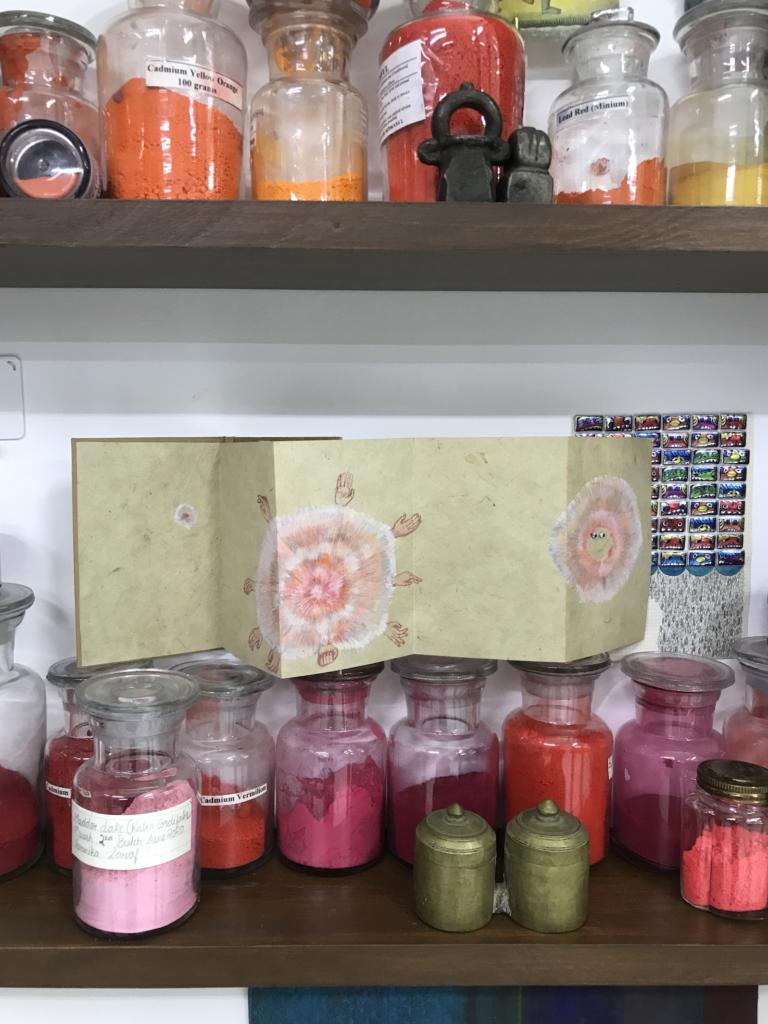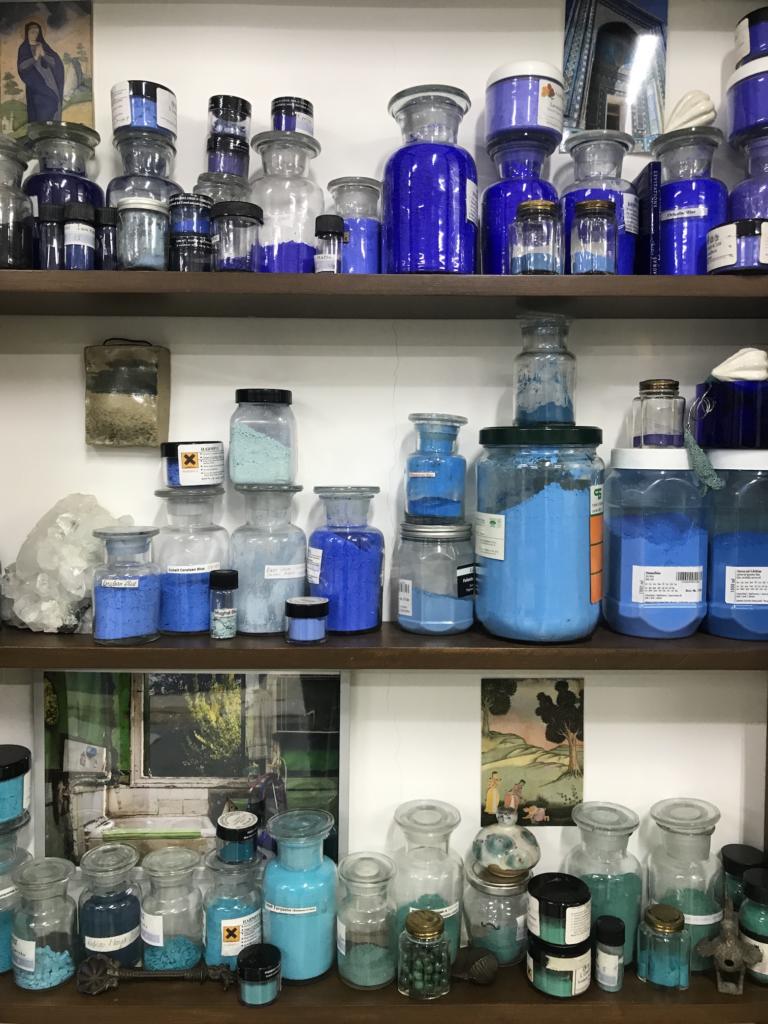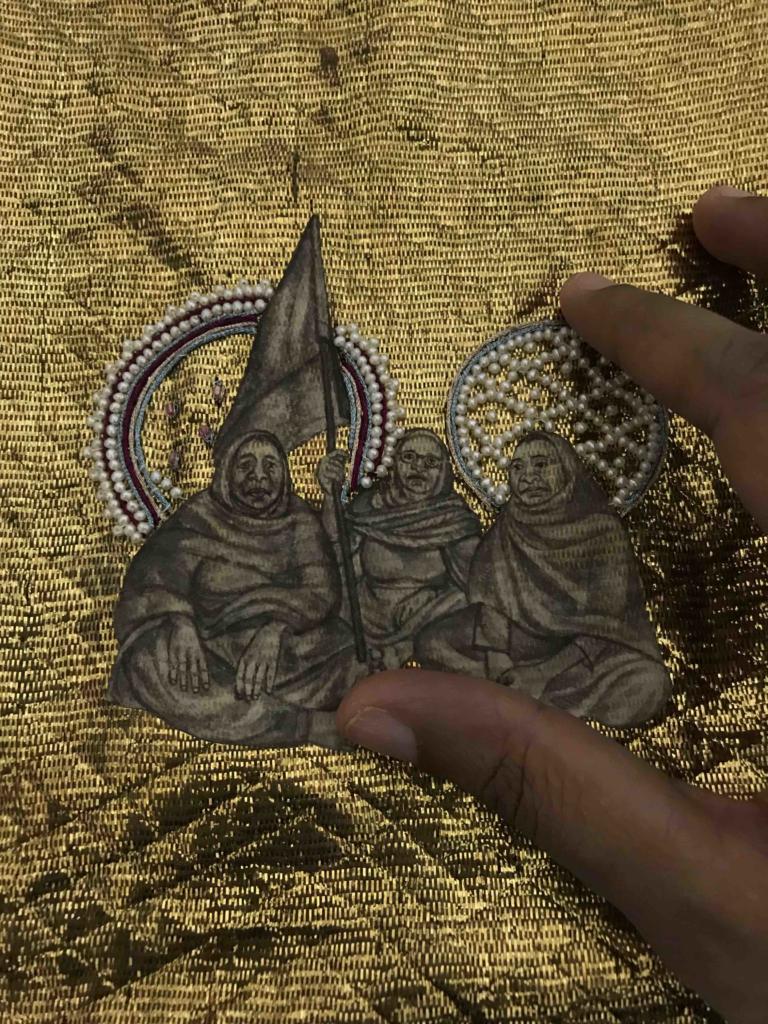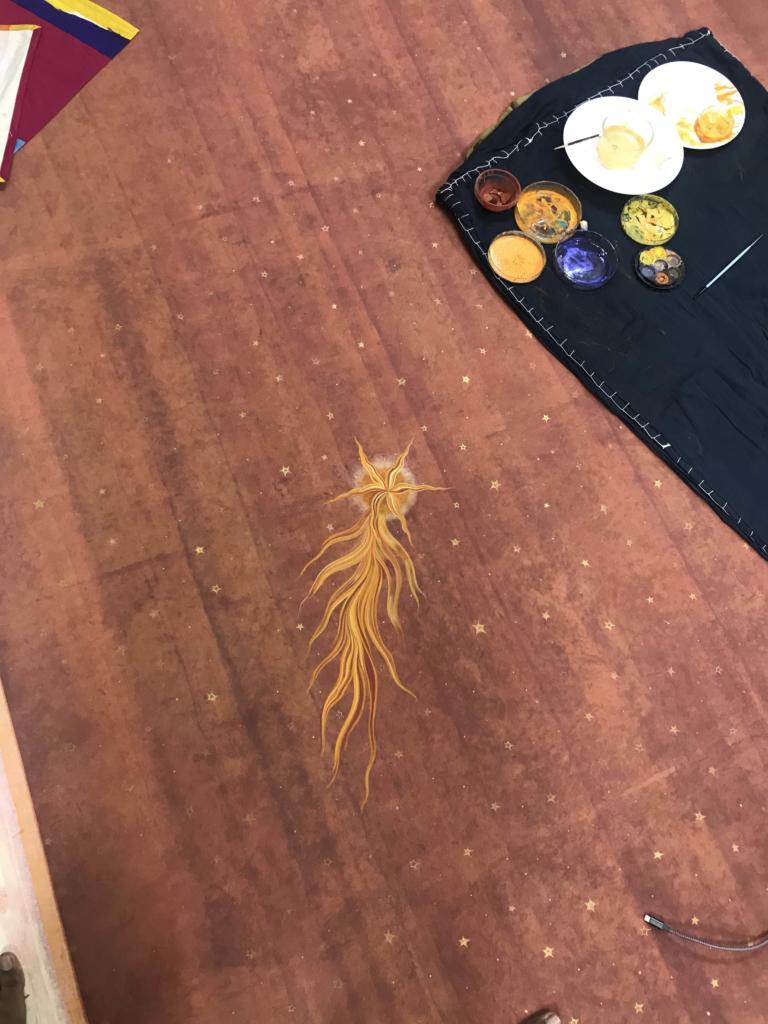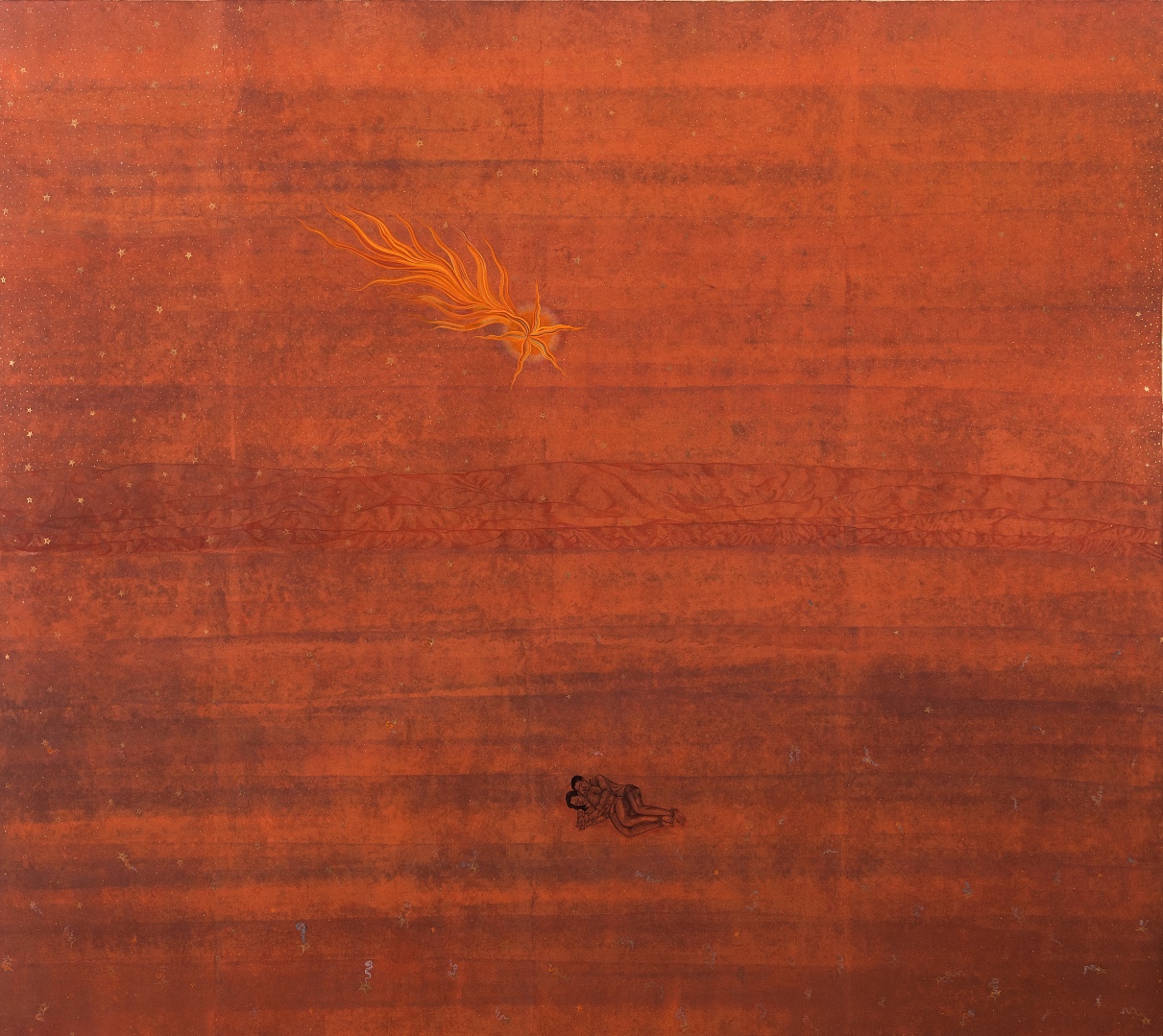
‘Love Is Contraband in Hell (Assata Shakur)’, 2020, Watercolour on Wasli backed with cotton textile, Varunika Saraf © Sarmaya Arts Foundation
“Love is contraband in Hell, cause love is an acid that eats away bars. But you, me, and tomorrow hold hands and make vows that struggle will multiply. The hacksaw has two blades. The shotgun has two barrels. We are pregnant with freedom. We are a conspiracy.” –Assata Shakur
She was a teenager in the ’90s, when Varunika Saraf became fascinated with a portrait of a dying man. It was the Mughal miniature of Inayat Khan as he lay on his death-bed, ribs painfully exposed and fragile frame propped up by cushions. The portrait was commissioned in 1618 by the man’s friend, Emperor Jehangir. This almost loving portrayal of sickness and death fascinated Varunika. She was gripped with the urge to create art that exerted this kind of unsettling power. It still guides her hand today.
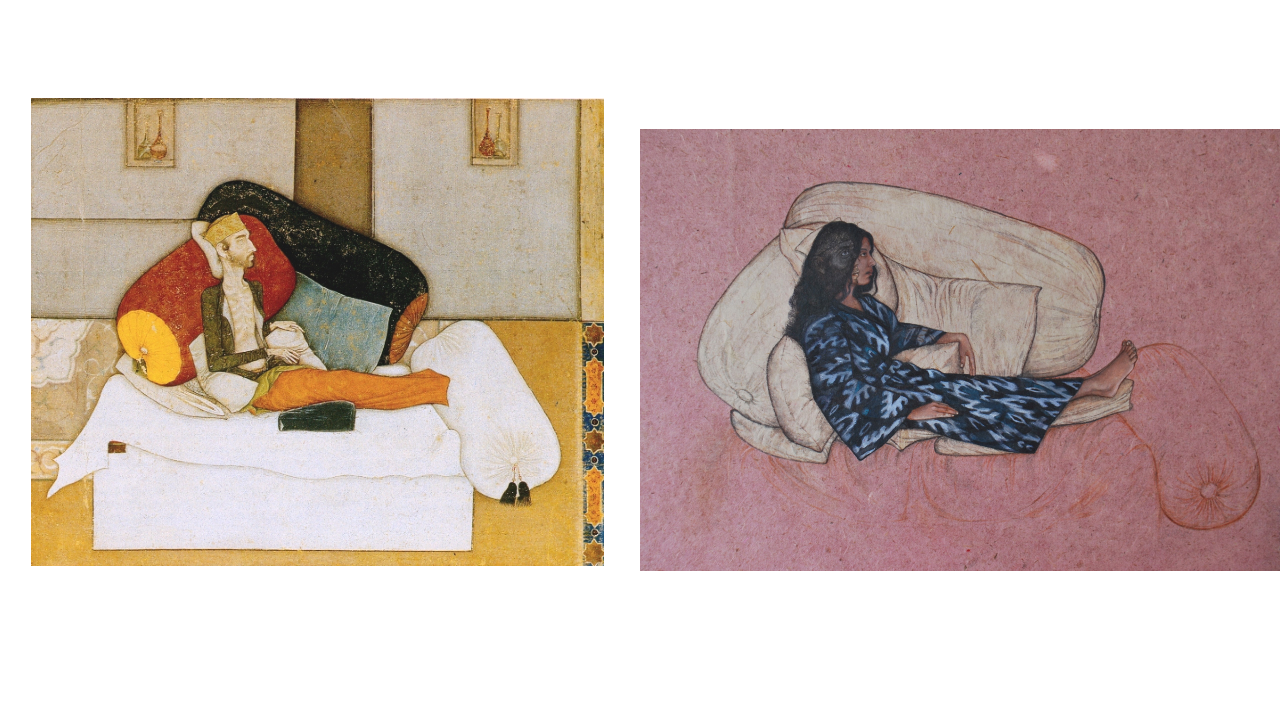
(Left) The Dying Inayat Khan, ca 1618, Bodleian Library, Oxford/Wikipedia Creative Commons; (Right) Self Portrait as Inayat Khan, 2016, Watercolour on wasli backed with cotton textile © Varunika Saraf
Varunika Saraf’s paintings draw you in with their vibrant splashes of colour, only to unnerve you with the details veiled underneath. Hidden within strokes of brilliant pigment—handmade in her studio—are the artist and art historian’s commentaries on the political realities and historical injustices that define this particular moment in Indian history. In a freewheeling conversation, she spoke about her process, politics and everything that flowed from that first electrifying encounter with traditional Indian art.

From ‘Those Who Dream’, 2020, Watercolour on wasli backed with cotton textile, Varunika Saraf © Sarmaya Arts Foundation
What drew you towards miniature art?
“I was around 10 or 11, when an uncle gifted me two books of ‘miniature’ paintings: India: Art and Culture by Stuart Cary Welch and a Marg publication, Pratapaditya Pal’s Master Artists of the Imperial Mughal Court Vol I. It is generally believed that this form of painting isn’t taught in art schools, which is not true. It was taught over two years in the four-year BFA program at the College of Fine Arts in Hyderabad. And luckily for me, our head of department was a wonderful artist, Kavita Deuskar, who taught me miniature painting. I continued with the form through my Master’s, but I was beginning to question many things about it. Why do we call it ‘miniature painting’ to begin with—there is nothing ‘mini’ about them, some of them can actually be quite large. Why do we disregard artists trained in ateliers and karkhanas? What is their history? Where do they come from? Art history tells you the form died out in the 19th century. But if it is a dead tradition, how has all this technical knowledge survived? Where were these artists trained? These questions eventually led to my MPhil and PhD research.
Your art goes beyond the mandate of the traditional miniature to question its very norms. Can you elaborate on that and tell us about your perspective on this form?
“There is a huge discomfort with the word ‘miniature’. The etymology of the word miniature comes from the excessive use of the pigment minium that was applied to European manuscripts. When Europeans came to India, they saw certain paintings that resembled their medieval manuscripts and that’s how the terminology stuck. Traditions are also something quite complicated. Tradition has nothing to do with the past, it’s always about the present. It’s how we would like to construct our past for ourselves. We assume that the way things have happened is the only authentic way. And that’s the problem that I have with young people: they completely restrict themselves in the name of tradition. Whereas, you should study the works that are created in the past and draw something from them, the essence. For me, that is very important instead of falling into the trap of tradition or style.”
Many individual art processes are part of your practice, which includes the making of wasli and natural pigments, as well as dyeing and embroidery. Can you take us through some of these techniques?
“A lot of my past work has embroidery and a lot of crochet as well. My generation didn’t have to face the kind of battles women from earlier generations did. Artists who worked with embroidery and crochet had to fight for inclusion into the canon of serious art. We stand on the shoulders of people who come before us.
“When it comes to pigments, I make a few colours from scratch like Persian blue, but a lot of pigments are sourced from specialist shops or conservation shops. I make watercolours from these pigments. This started for two reasons. One, I needed really large quantities of watercolours because I layer them. A lot of my paintings receive 5-6 layers, which is how you get that final intense colour. Two, the good quality watercolours you get in the market are made for creating a transparent effect, and I need opacity.”
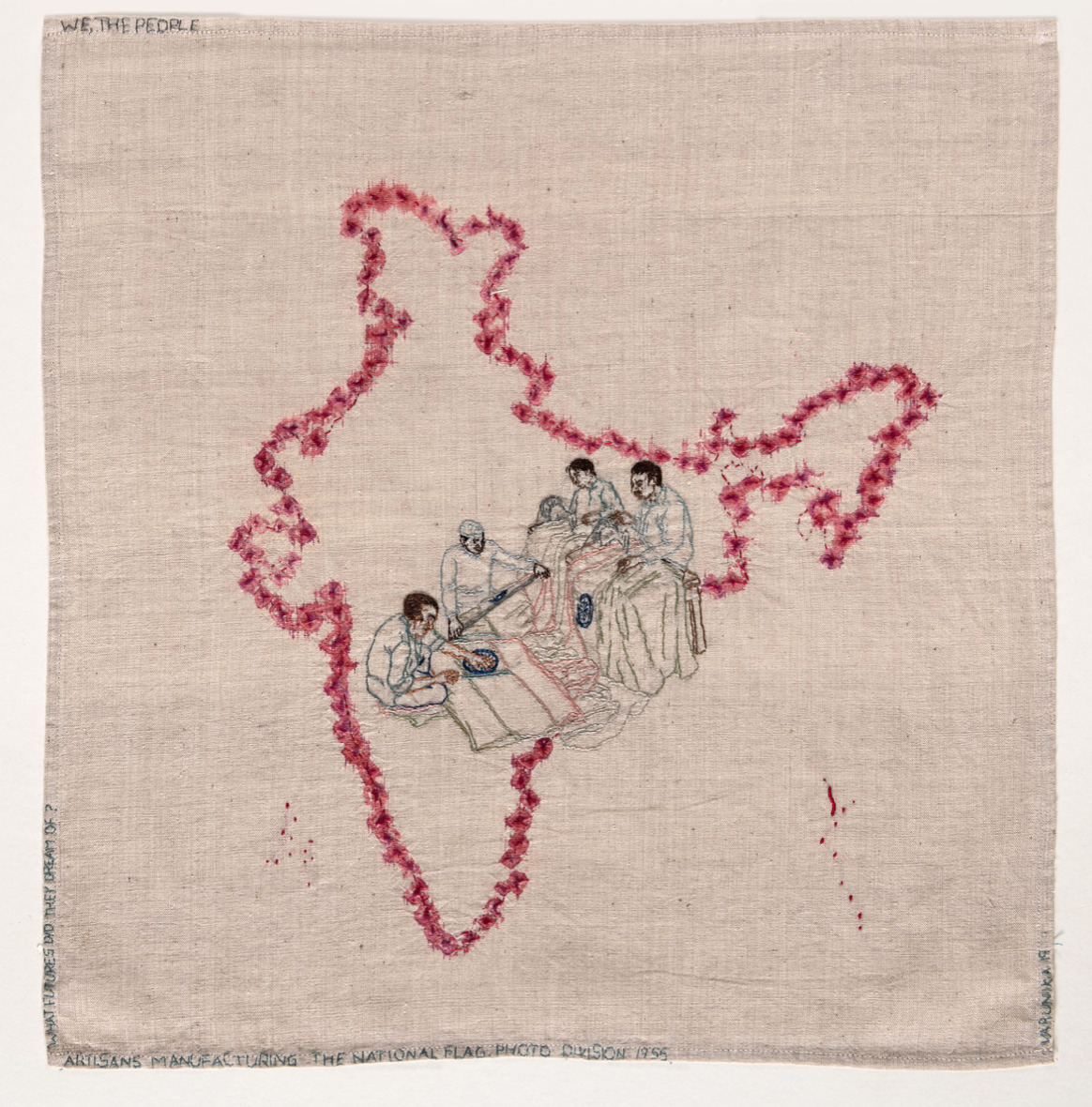
‘We, The People’, 2018-2019, Embroidery and Cochineal dye on cotton textile, Varunika Saraf. Image source: GalleryChemould.com
How does the subject of a work influence your choice of artistic technique?
“I do think the subject drives the medium that one selects. For instance, when I was working on We, the People (a 2018-19 series tracing the forgotten injustices in India’s history)—that entire series only made sense to me in embroidery. In Rushdie’s novel Shame, there’s an interesting character called Rani who is imprisoned when her husband is executed. In prison, she embroiders 18 shawls that outline her husband’s political regime and contain graphic details of his wrongdoings. And she gives these shawls to her daughter. It really stuck with me, this vision of someone quietly sitting in a place and embroidering the history of the nation.

From ‘Those Who Dream’, 2020, Watercolour on wasli backed with cotton textile, Varunika Saraf © Sarmaya Arts Foundation
You talk about socio-political issues, marginalised histories and even ecological concerns through your works. How do you process your emotions about some of the more disturbing themes or events you reference in your art?
“Making art is the only way I can process these emotions. It’s who I am; I can’t not speak about things I feel strongly about. Very early on in my career, I had a very strange exchange with a junior of mine who said to me, ‘Why are you making this political stuff? You’re a woman, there must be some inner authentic experience you might have, you know, something feminine.’ I think it all comes down to this fundamental problem, that people think women shouldn’t be political agents. We’re still obsessed with the idea of the male intellectual. A woman has to jump through so many hoops to be taken seriously.”
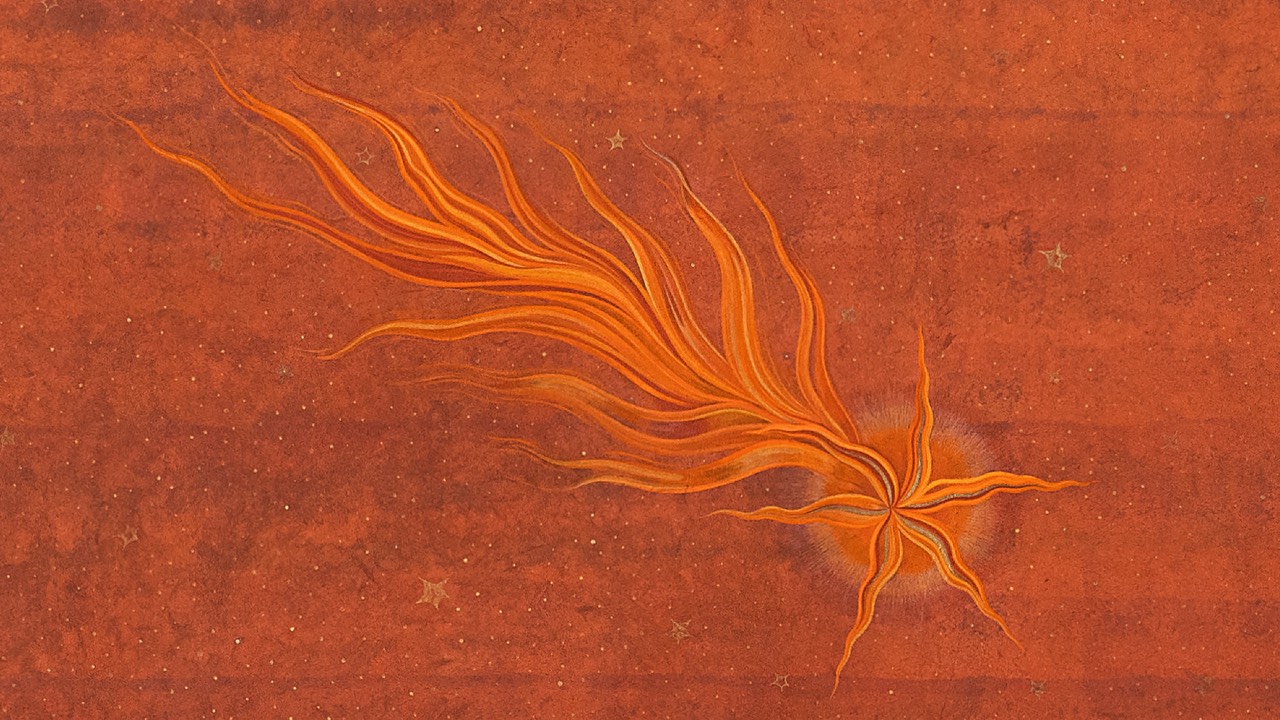
Detail from ‘Love is a contraband in hell’, part of the series ‘Caput Mortuum’
Speaking of uncomfortable things, tell us about your 2021 show Caput Mortuum.
“Caput mortuum is a synthetic pigment that resulted from an alchemical experiment gone wrong; it’s Latin for ‘worthless remains’. Over the past 4-5 years, I found that my hand always reached for it when applying the first coat of colour. Five paintings ended up with the same under-layer of caput mortuum. I realised it looked a lot like dried blood and I was very subconsciously using it as a metaphor for the blood spilled in the making of a nation.
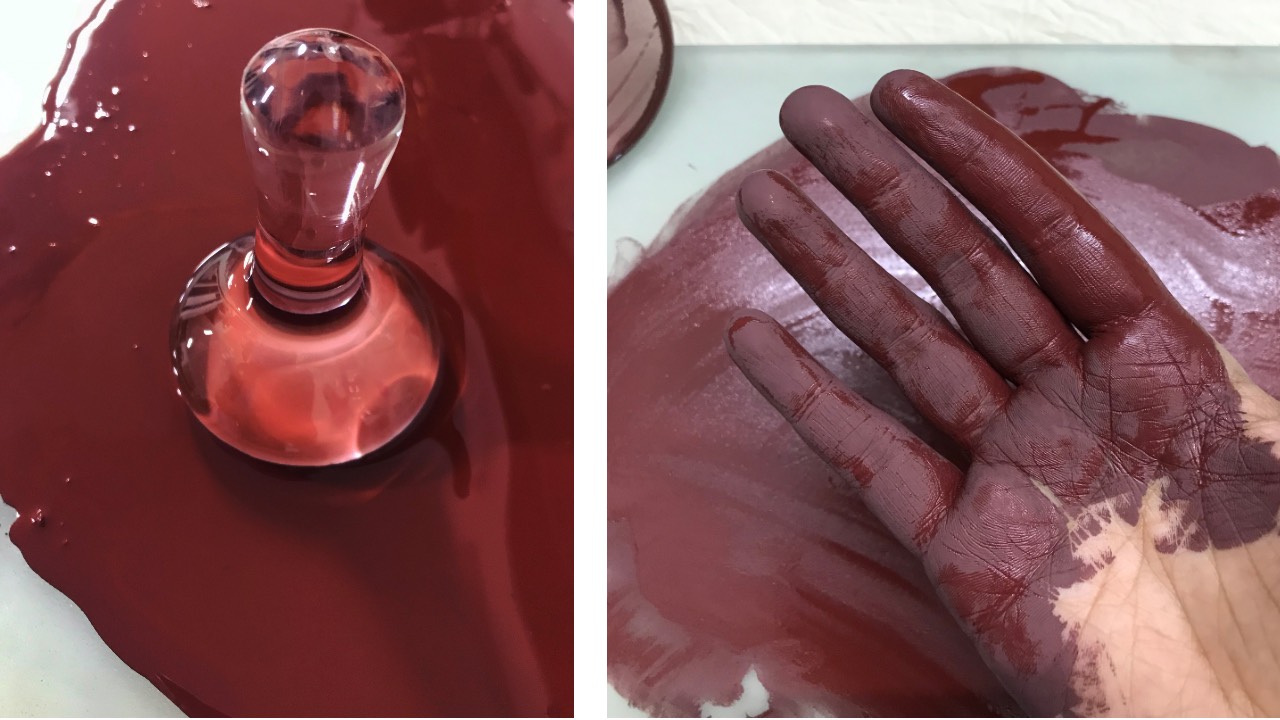
Varunika Saraf works with the colour caput mortuum in her studio
When you apply colours in layers, the first layer always bleeds through to affect the surface. It made sense to me: all these layers of histories and we’re still impacted by what has happened in our past. It still impacts events being played out right now. Caput mortuum is in all the paintings of this series, literally and figuratively, so that had to be its name.”

From ‘Those Who Dream’, 2020, Watercolour on wasli backed with cotton textile, Varunika Saraf © Sarmaya Arts Foundation
In an interview, you’ve said your works are “a refusal to forget” and that there’s “a sense of violence in forgetting”. Can you elaborate on this?
“I think bearing witness is very important. Of course, expressing your dissent is important too. But because there is so much happening all around, it is very easy to forget. Amnesia is a coping mechanism. But every time you forget, it adds a layer of violence. The erasure of someone’s history or experience is an act of violence.”

From ‘Those Who Dream’, 2020, Watercolour on wasli backed with cotton textile, Varunika Saraf © Sarmaya Arts Foundation
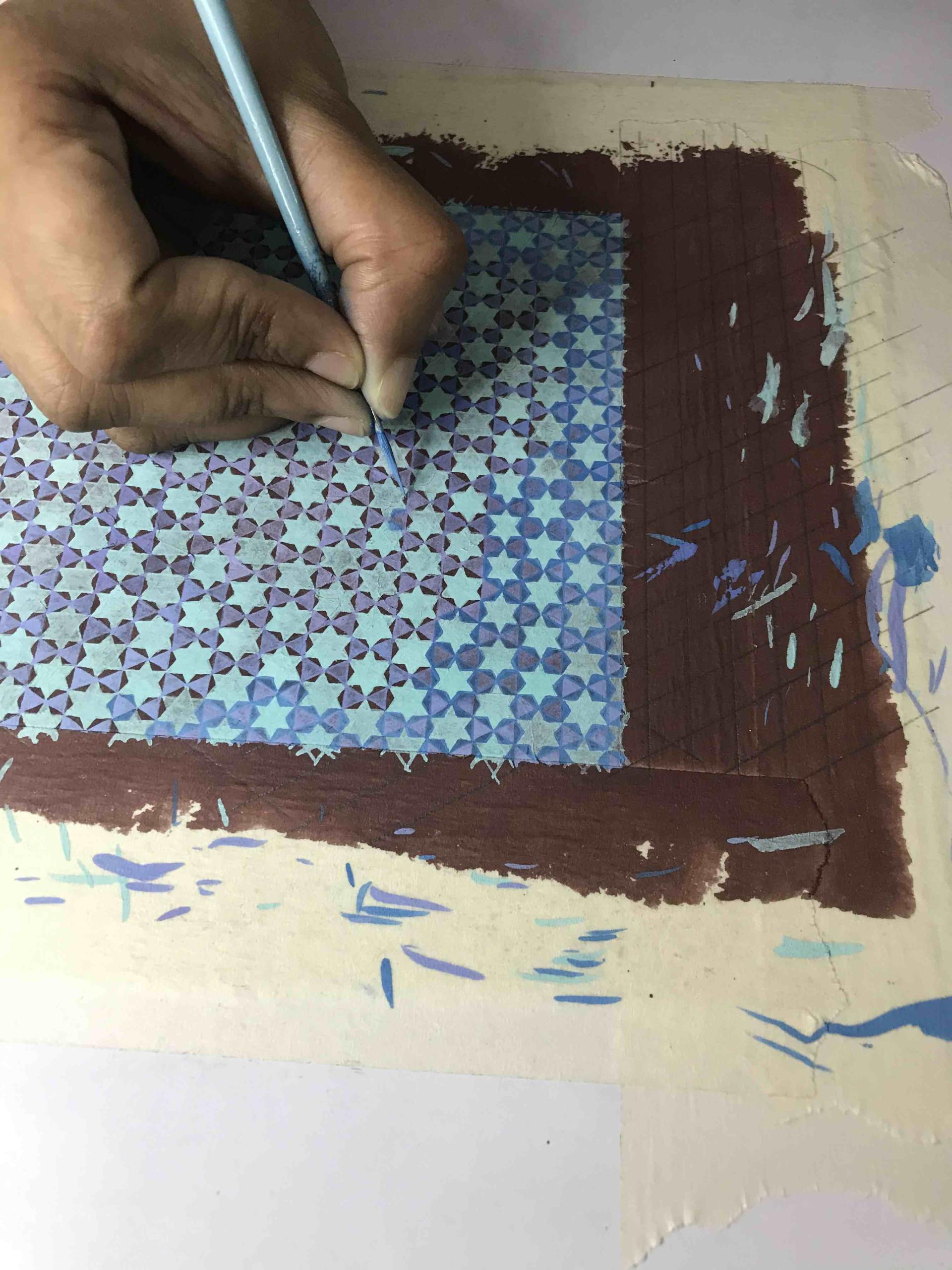
From the artist’s studio: The making of ‘Those who dream’
How did influences as diverse as Magaret Bourke White’s photographs of the Partition of India and the medieval German manuscript, The Augsburg Book of Miracles, come to find place in the Caput Mortuum series?
“As an art historian, you continually read and access a variety of material. And as an artist, when something really speaks to you, it finds its way into your work. That’s why there is so much of a temporal flux in my artistic influences. Medieval European manuscripts are very interesting because they were made at a time when Europe was constantly suffering from war, plague, political upheavals, crop failures, etc. The imagery that artists developed to process these events holds clues on how we can talk about the similar anxieties of our times, from the pandemic to the violence in our society to climate change.”
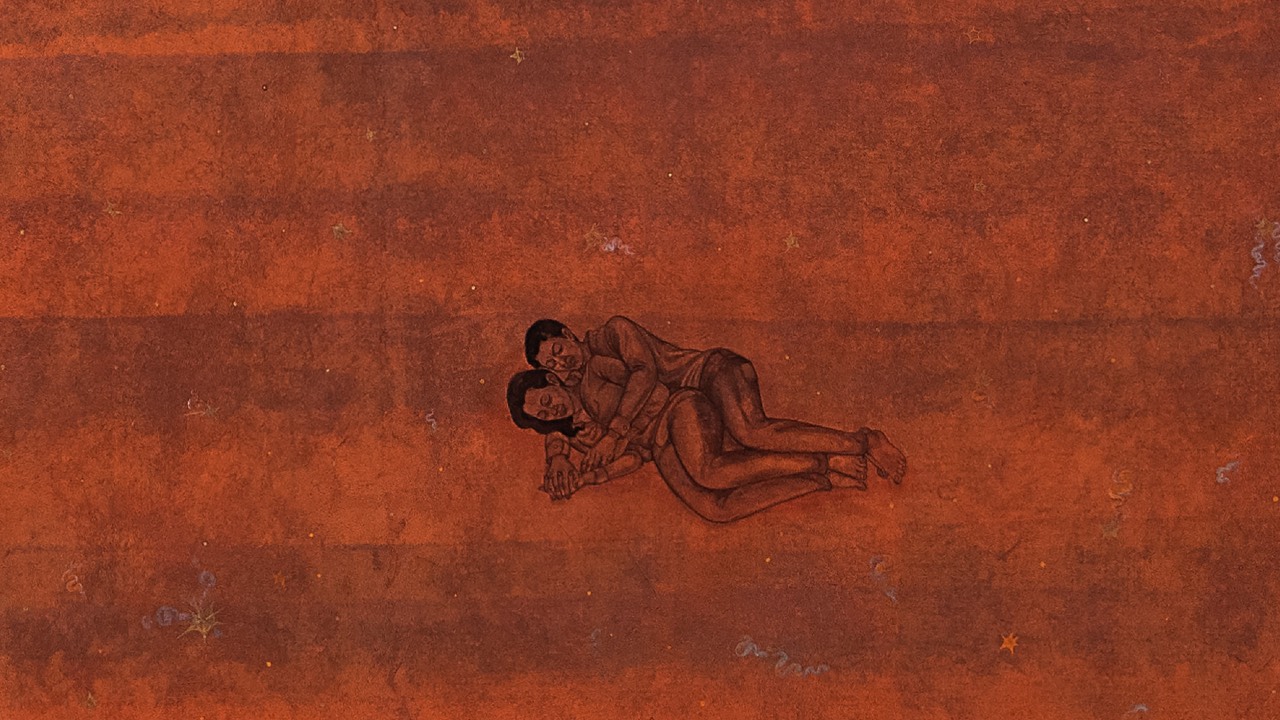
Detail from ‘Love is a contraband in hell’, part of the series ‘Caput Mortuum’
How would you explain the theme of Love is a contraband in hell from the Caput Mortuum series?
“I was thinking about Love is a contraband in Hell around Valentine’s Day. You know the kind of things that routinely play out in our country every Valentine’s Day. I was also thinking of it in connection with the hijab controversy that erupted in Karnataka but is now spreading elsewhere. I think the only way we can fight back is love. Loving your partner, loving your fellow human being, loving across religion, caste—that’s the only solution we have. Love, empathy, kindness, understanding. If we offer these things to everybody in our lives, that’s the only way out.”

From ‘Those Who Dream’, 2020, Watercolour on wasli backed with cotton textile, Varunika Saraf © Sarmaya Arts Foundation
Another striking work from the series is the 16-part Those who dream.
“Those who dream is also very much about our current predicament. There were many signs of hope even in the pandemic. Movements like Pinjra Tod or the farmers’ agitation had solid participation from women and young people. I would feel very hopeful looking at this. But the situation that we are in, I am not sure if we’re regressing into a grid or emerging from a grid. That’s something only time will tell. The entire series, Those who dream, was made in such a way that you’re not quite sure whether the figures are receding into the pattern or coming out of the pattern and that is symbolic of the structure of our society today.”

From ‘Those Who Dream’, 2020, Watercolour on wasli backed with cotton textile, Varunika Saraf © Sarmaya Arts Foundation
Who is Varunika beyond the artist- art historian? What music do you listen too, which books are you reading?
“I have a very eclectic taste and a lot depends on what mood I am in. I like jazz, classical music, and contemporary music. I love Coke Studio, Pakistan. I also read a lot. I’m really stuck on Eduardo Galeano right now. My mum has been trying to infect me with her love for [Haruki] Murakami. His books throw up mental imagery that stays with you. He’s a master trigger-er. I think I have been trying to do something like that with my work as well. Find a balance with beauty, but beauty that unhinges you. I feel a work is successful if it makes you think. If it throws up associations or questions in your mind. I don’t want to make paintings just to decorate people’s houses. That is the death of art.”
Scenes from Varunika Saraf’s studio in Hyderabad
Wall of muses
Colourscapes
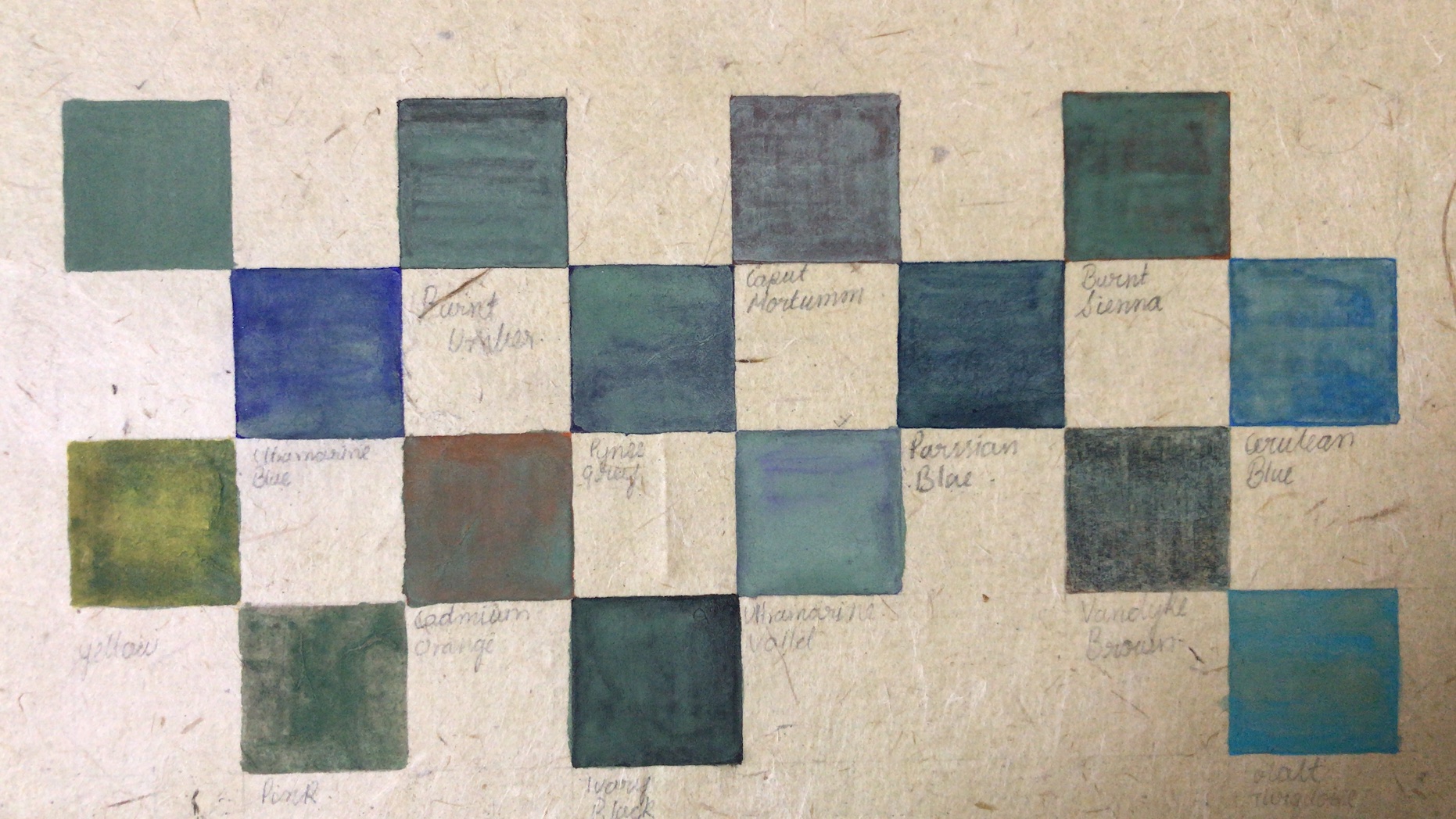
In progress, in process

